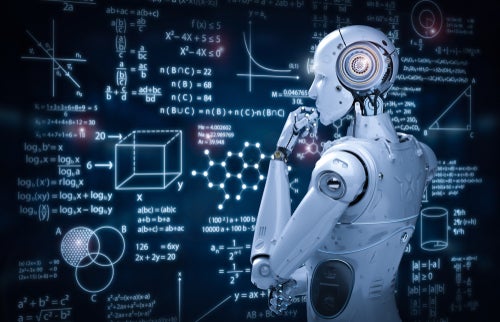
ArtificiaI intelligence (AI) is on the rise across business in general. But the foodservice industry may be another matter, as it isn’t usually considered to be the fastest sector when it comes to adopting new technology. Whilst the industry’s disruption by the gig economy did indicate new pathways, the recent stock flotation of food-delivery startup Deliveroo has found itself beset by the same ESG issues over workers’ rights that have long dogged the likes of Uber and Lyft.
It’s debatable therefore that the gig economy will revolutionise foodservice, but the picture changes somewhat when looking outside the labour field. In such cases, AI may be the game-changer that other sectors see it as; a GlobalData report from 2020 predicts the global AI platform market will be worth $52bn within three years. While it may not solve the sort of labour disputes faced by Deliveroo, AI-powered automation is what foodservice should be taking note of, and in some cases already is.
Disruption and delivery
Initial market confidence in Deliveroo no doubt came from the boon it gained during the pandemic. Covid-19 significantly impacted the foodservice industry, changing consumer demand. Around 17% of US restaurants permanently shut down in 2020 due to the crisis, and those that stayed in business shifted to online delivery. A lack of digital confidence in the field made it easier for many to partner with Deliveroo and other popular delivery platforms rather than setting up their own online infrastructure.
Foodservice was blindsided by the pandemic as many other sectors were, but a 2020 survey on emerging technology trends by GlobalData revealed that the foodservice sector was the least ready for upheaval of the technological sort, with 35% of respondents admitting to being unprepared.
This perception of foodservice as a tech laggard may be accurate, but the market for AI in foodservice is rapidly growing. Investment, as GlobalData’s report states, will “primarily come from food aggregators (and) delivery companies,” noting that the trend was increased by online food ordering and home-delivery, which unsurprisingly generated more data. Whilst what happens with that data will define the success of AI for foodservice, its use by the aggregators may also pose challenges for restaurants further down the line.
Dining out on data
As GlobalData’s thematic research report AI in Foodservice reminds us, aggregators use data science and machine learning (ML) for everything from route optimisation for drivers to showing personalised, algorithm-based restaurant options to customers. AI is essential for brands like Just Eat and Uber Eats because it allows them to make the most of the huge amounts of data collected during the ordering process. Indeed, while the orders ultimately go to foodservice companies, it is the food aggregators that claim dibs on consumers’ data, from their food tastes down to their personal and payment details.
How well do you really know your competitors?
Access the most comprehensive Company Profiles on the market, powered by GlobalData. Save hours of research. Gain competitive edge.

Thank you!
Your download email will arrive shortly
Not ready to buy yet? Download a free sample
We are confident about the unique quality of our Company Profiles. However, we want you to make the most beneficial decision for your business, so we offer a free sample that you can download by submitting the below form
By GlobalDataThis gives aggregators a significant competitive advantage, with a power imbalance between them and foodservice companies. While this especially affects small companies, it wouldn’t be a bad idea for larger players to invest in their own systems to hold onto their share. The National Restaurant Association of India has already begun planning its own service in protest at the “predatory market practices” of food aggregators, bemoaning the “lack of transparency, deep discounting, and abuse of dominant position” by brands such as Zomato and Swiggy.
Cutting out the middleman might be more tempting as delivery aggregators use more and more data to identify gaps in the market. Prior to the pandemic, Deliveroo had created several delivery-only restaurants from scratch, each with their own branding and “health-focused” recipes. Couple this with the power imbalance, and Deliveroo may find another revolt on its hands further down the road, this time not from potential investors or workers, but the very brands on its platform. With AI and data back in their own hands, restaurants could beat Deliveroo to the punch.
Foodservice leaders: lots of customers, lots of waste
While delivery disruptors may be grabbing the headlines, the use of AI by major foodservice retailers gives the best glimpse of revolution in the sector and lessons for other industries in cutting down on waste. Starbucks is already playing the aggregators at their own game with a personalisation engine powered by Microsoft’s Azure (Microsoft and Amazon are two of the biggest AI vendors in foodservice.) The end result, a program called Deep Brew, allowed the Starbucks mobile app to develop recommendations aiming to increase the chance customers would buy more food and drink items.
Combining customer data with contextual info such as weather, time, and location, Deep Brew helps generate personalised recommendations based on how much customers like to spend. Personalised services like this may help with another issue identified by the GlobalData report, in that delivery customers order less items compared to a dine-in meal. Couple this with fees charged by aggregators and delivery brands, and it makes sense for retailers to maximise profit with AI wherever they can. Bringing the ordering experience in-house can assist with this, as opposed to outsourcing.
Interestingly, through AI-powered forecasts of product demand, Starbucks has optimised inventory management to help resolve its food waste. Producing over 600 million tonnes of CO2 equivalent a year, the foodservice industry is responsible for 14% of all food waste produced. That’s 60kg of food being discarded daily, causing an estimated annual loss of £2.5bn in the British hospitality and foodservice sector alone
AI has untapped potential in the fight against food waste, as the GlobalData Thematic Research team reported in 2020. Machine learning like computer vision, a solution where the computer recognises and reacts to the visual world, can ascertain the amount, quality and type of food thrown away daily. Currently, hotel group Accor and retailer IKEA are among the earliest adopters of the tech, cutting their food waste in half and saving over $880,000 annually. Online retailer Ocado meanwhile has invested £7m in an automated chef which can, among other things, optimise portioning in the kitchen with robotic precision.
It isn’t just brick and mortar incumbents in the waste game either. Disruptors like Deliveroo have their own so-called “dark kitchens” where food is prepared for various brands without using their main kitchens. Their couriers can also benefit from AI-optimised delivery routes which ensure food doesn’t get spoiled through traffic delays or distance.
With such potential for savings, profit and sustainability, it’s clear to see where the future of foodservice lies. Forget thoughts of fully-automated armies of couriers and cooks; it’s AI and its use of customer and company data which will wean foodservice off the gig economy.
Find the GlobalData Thematic Research: Artificial Intelligence (AI) in Foodservice report here.





